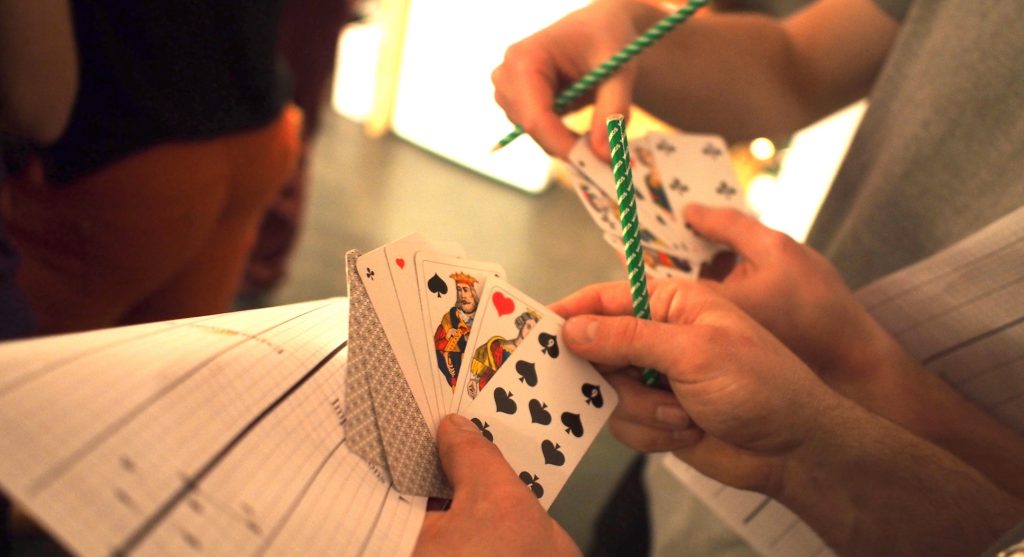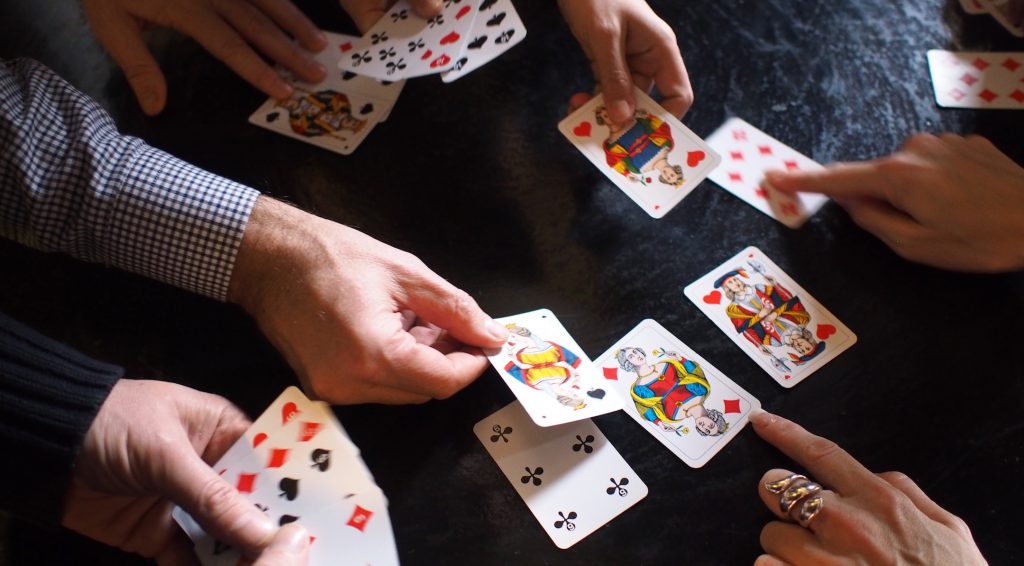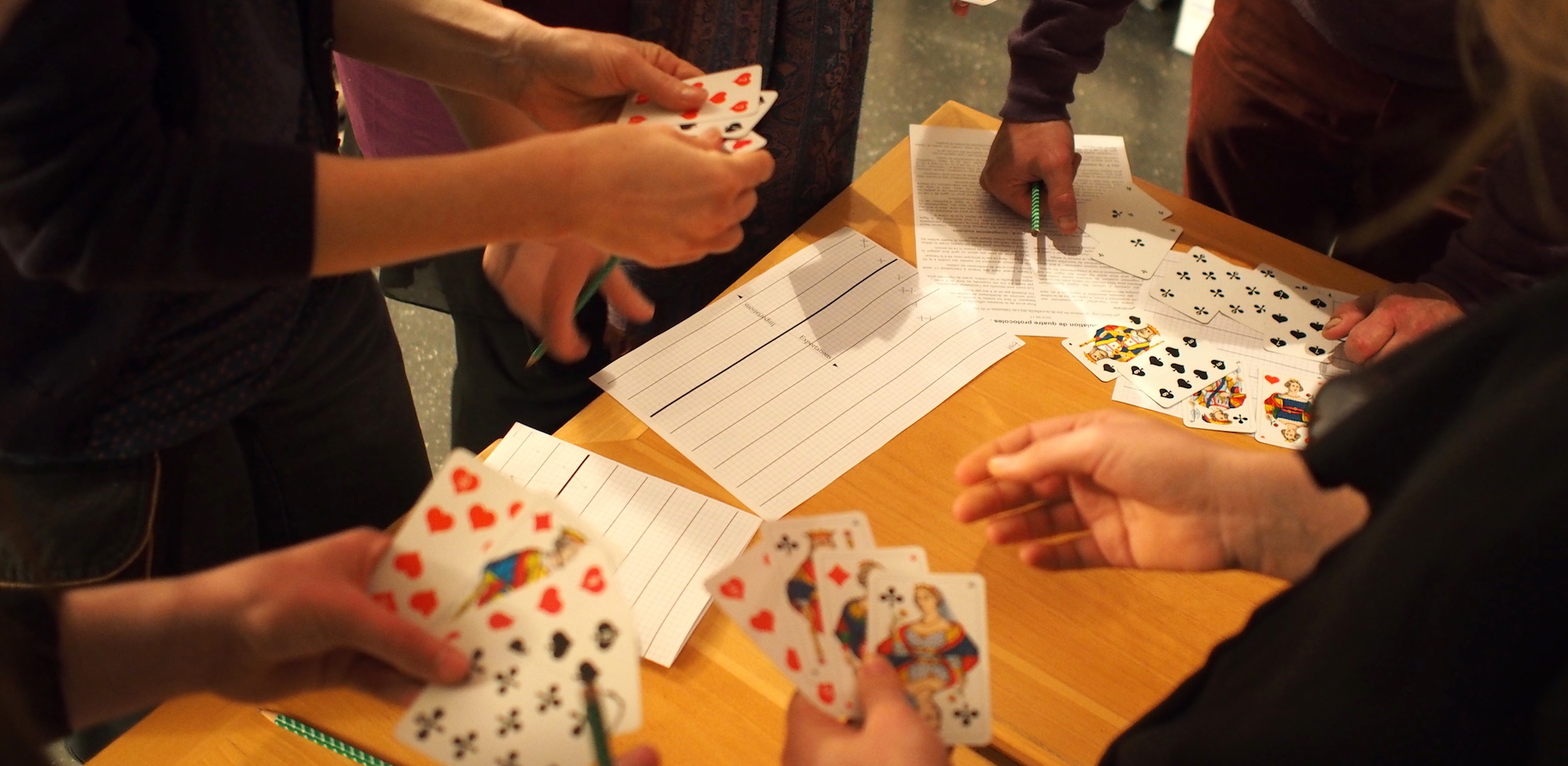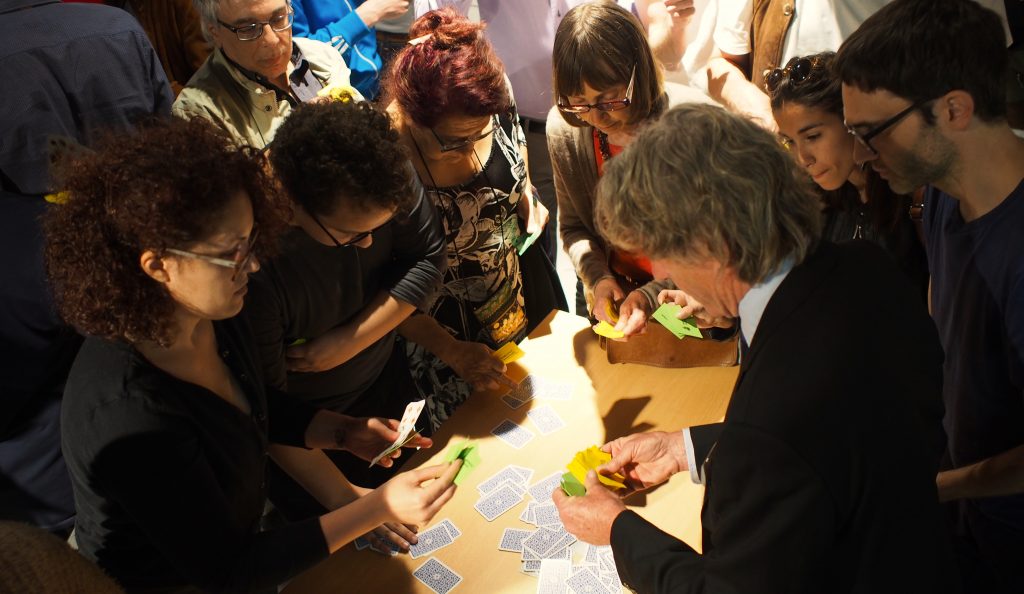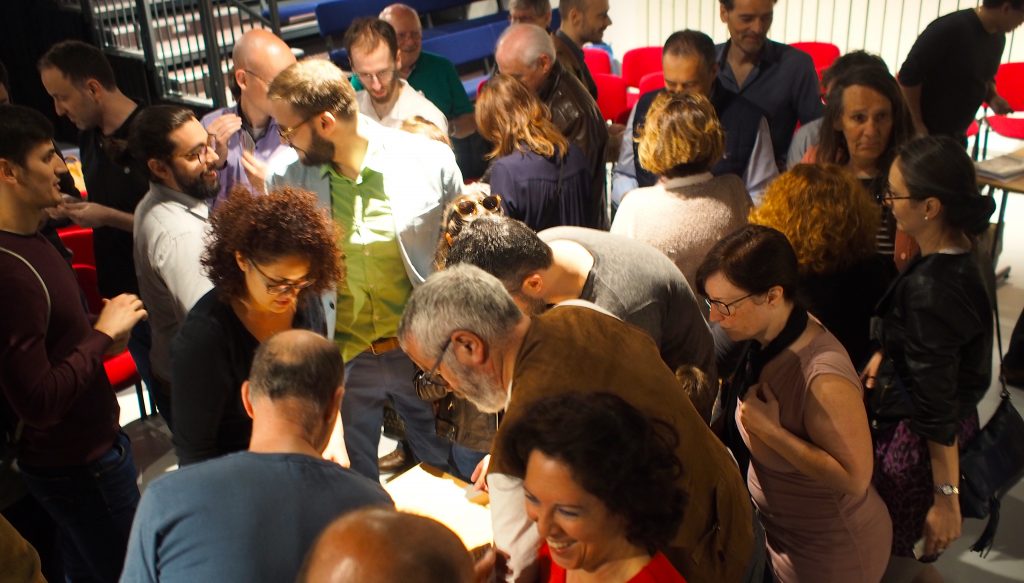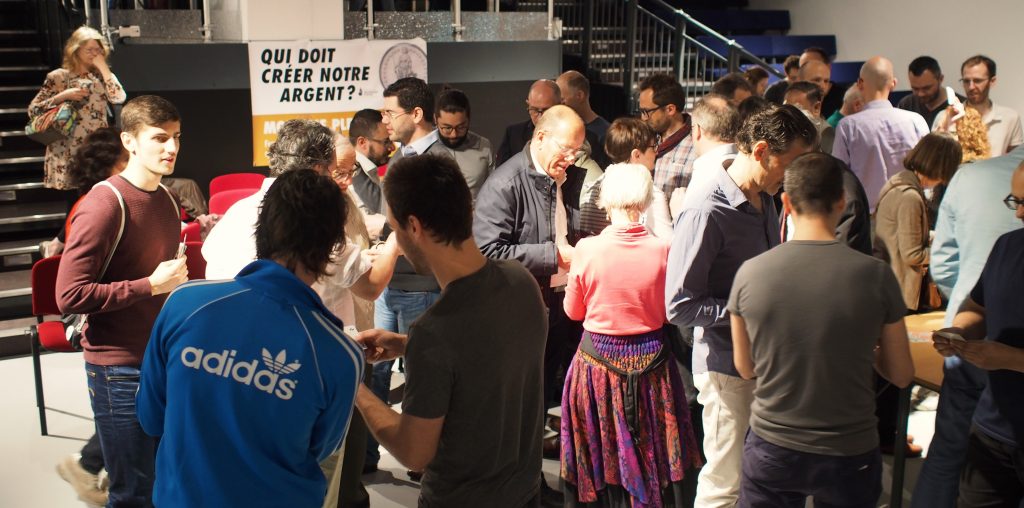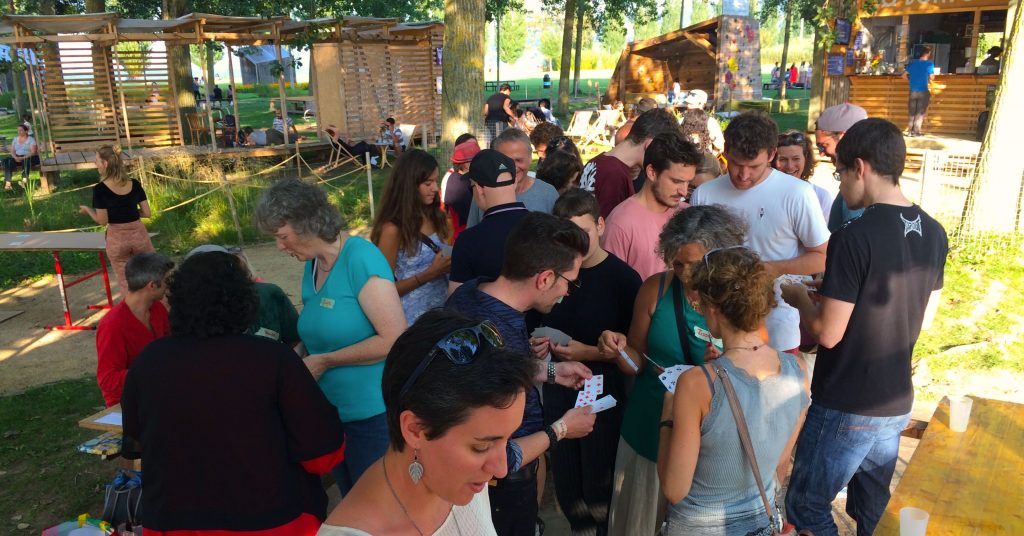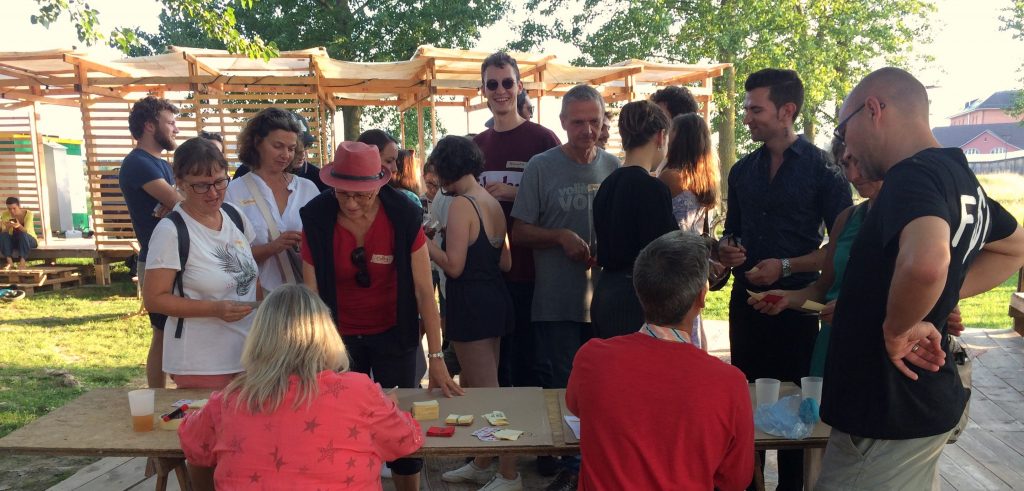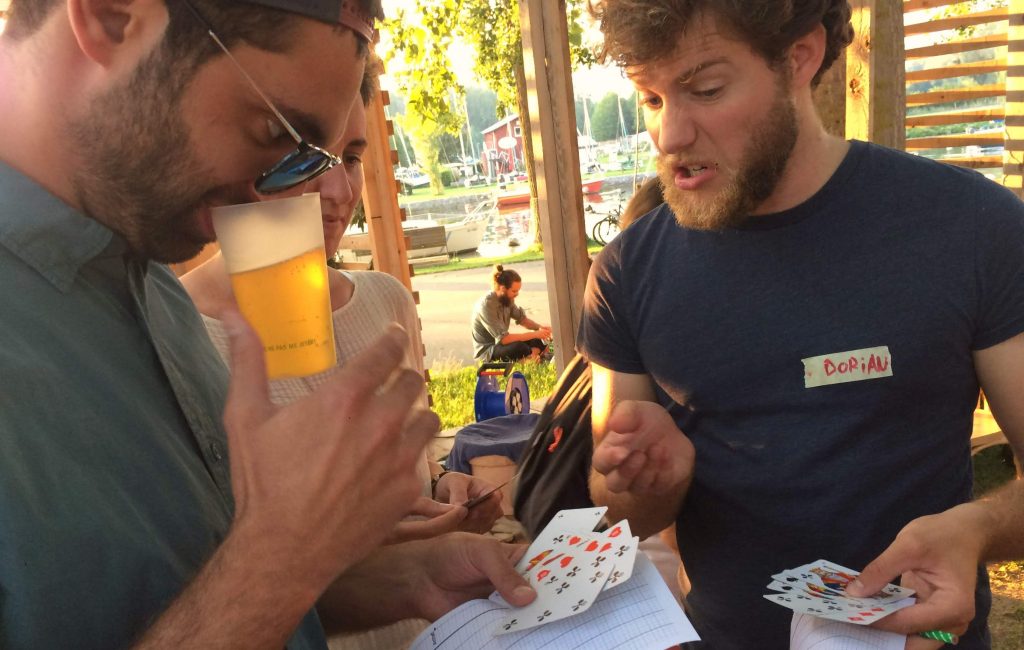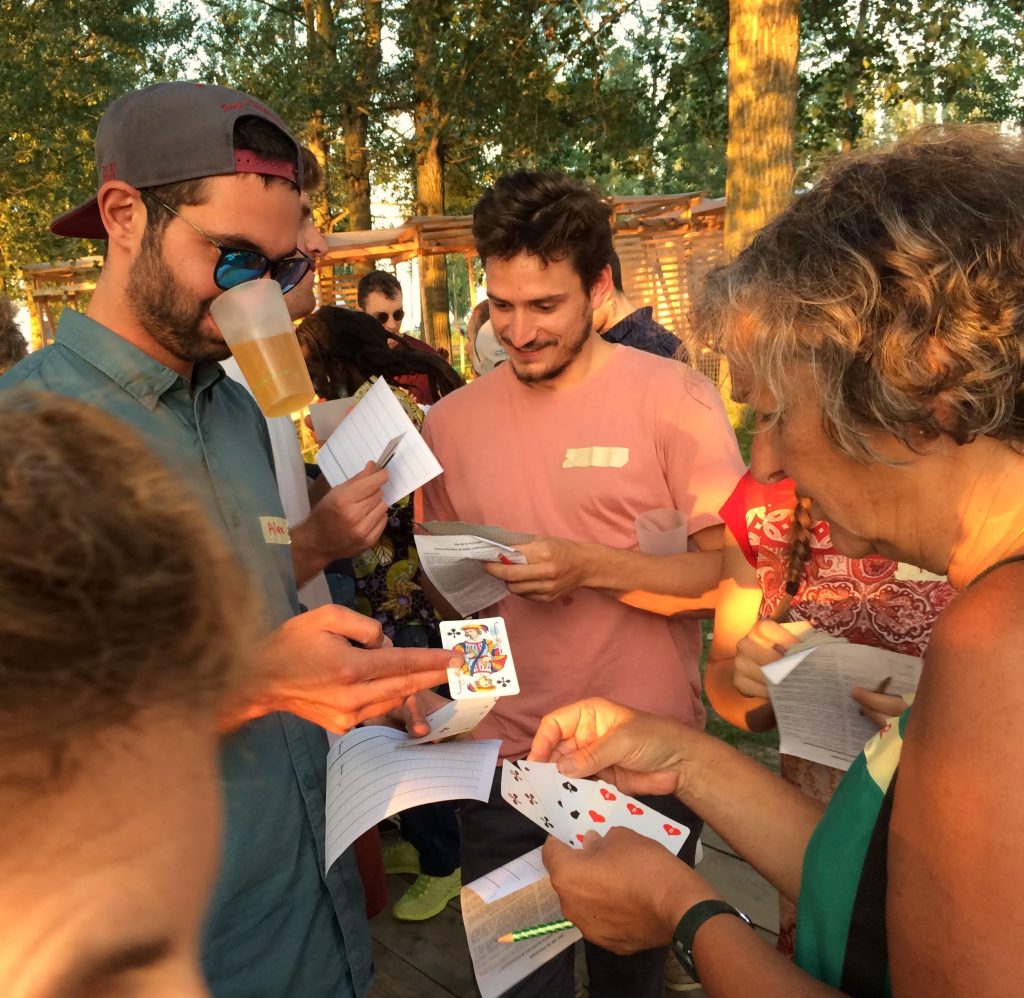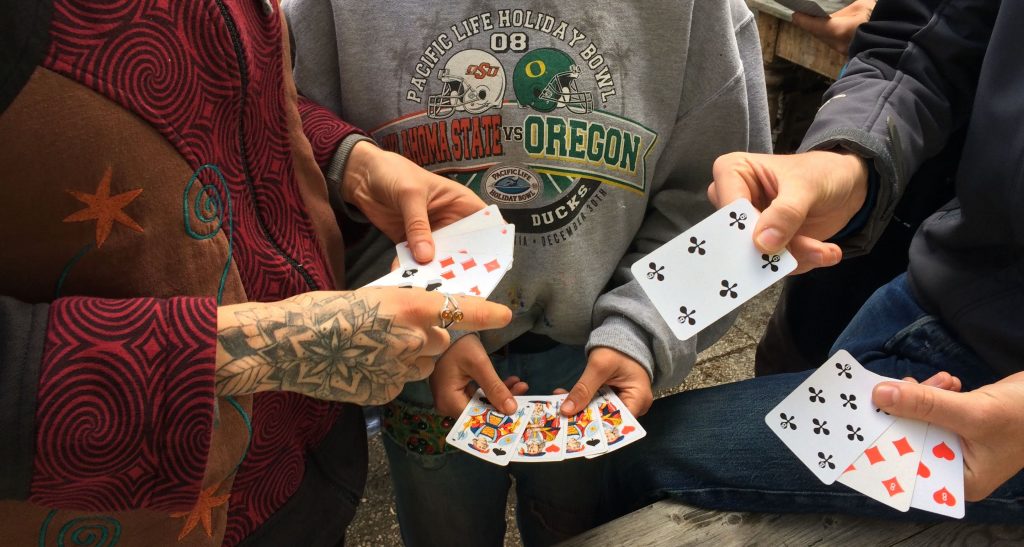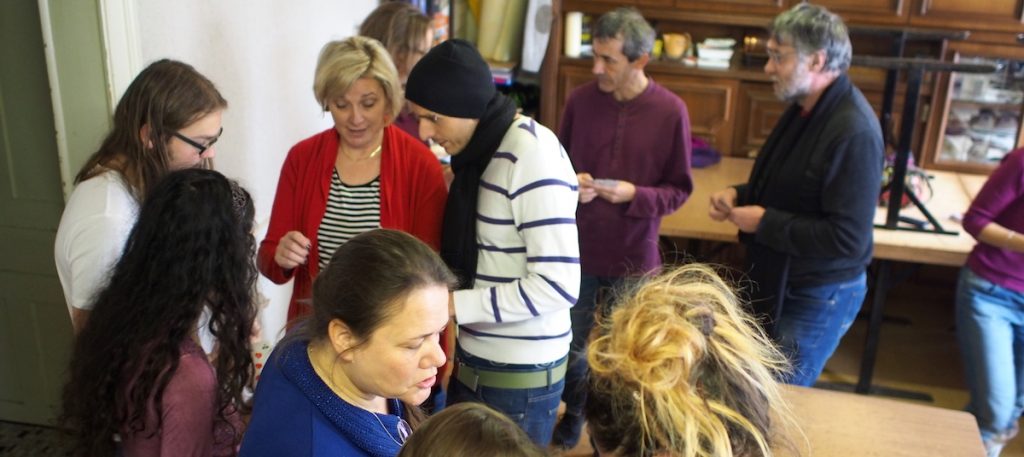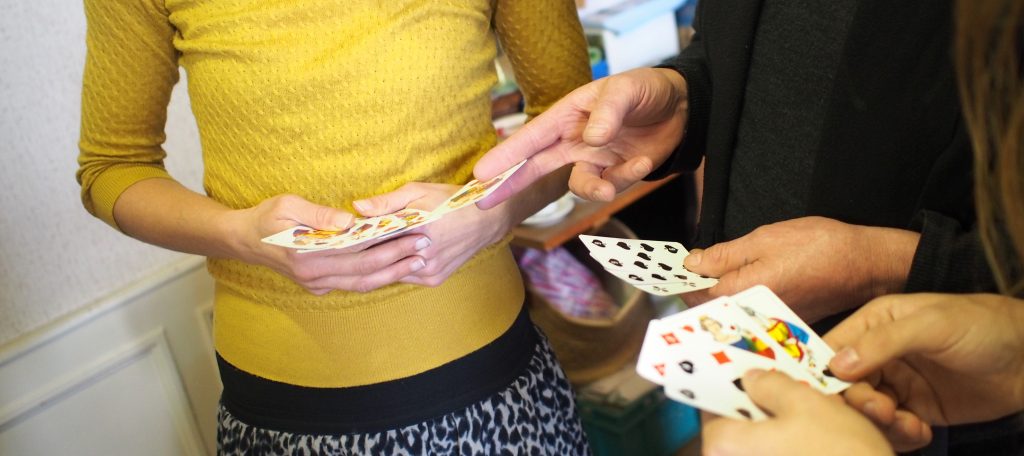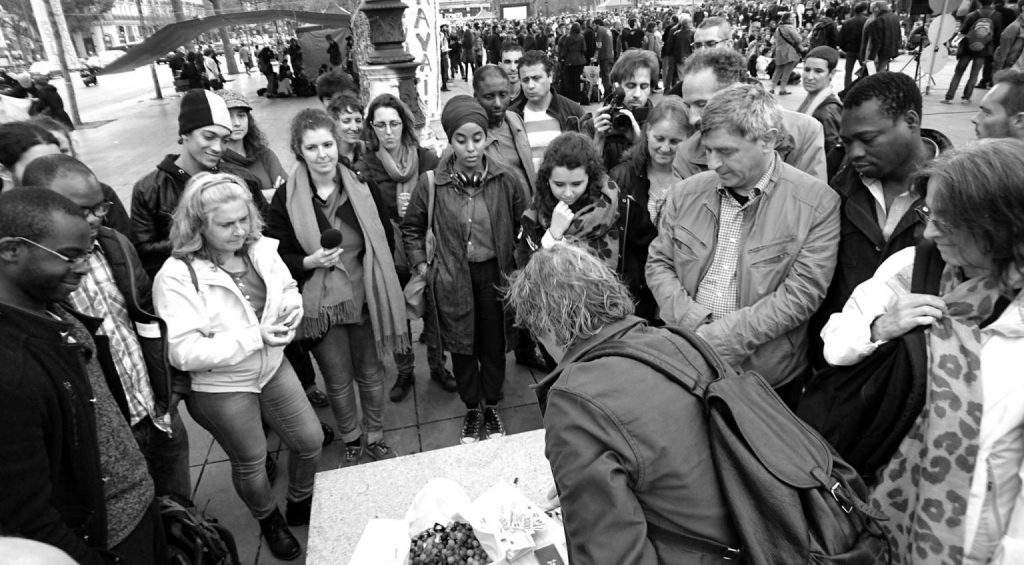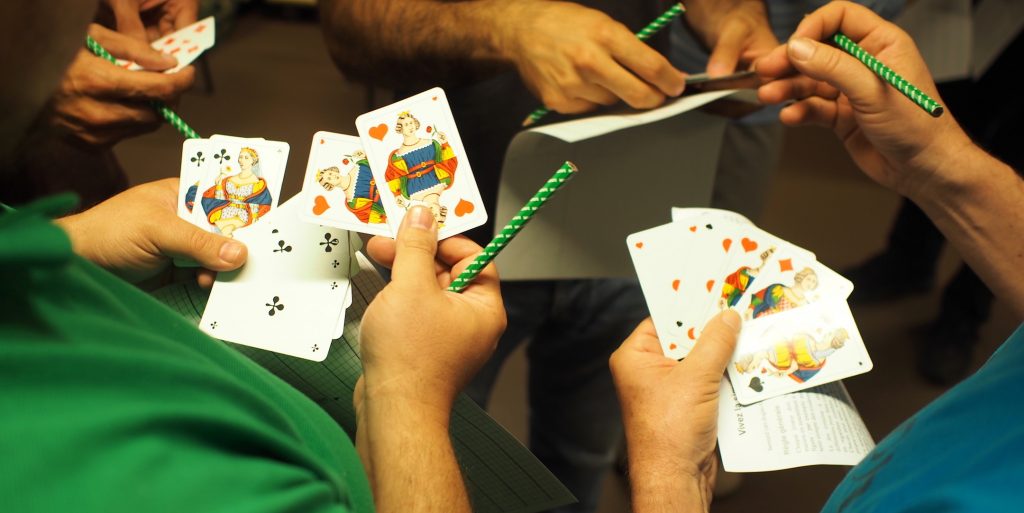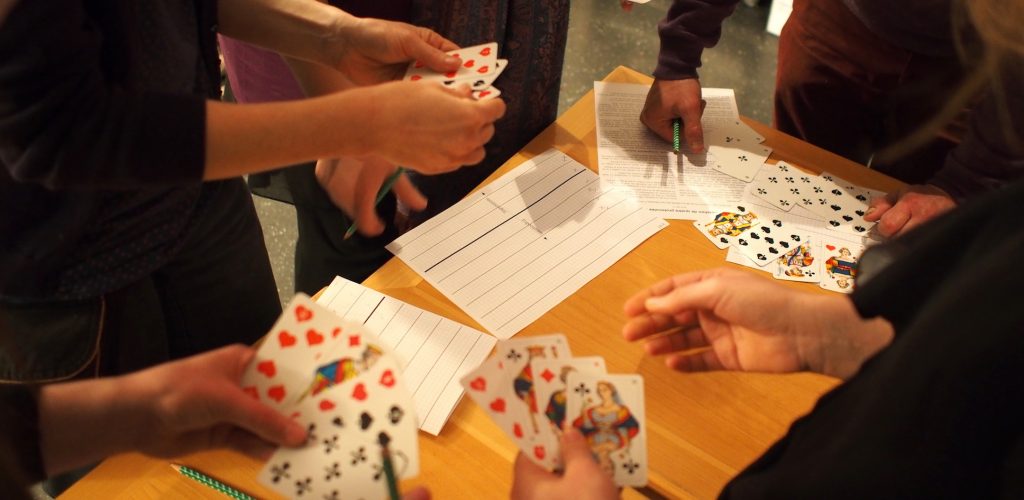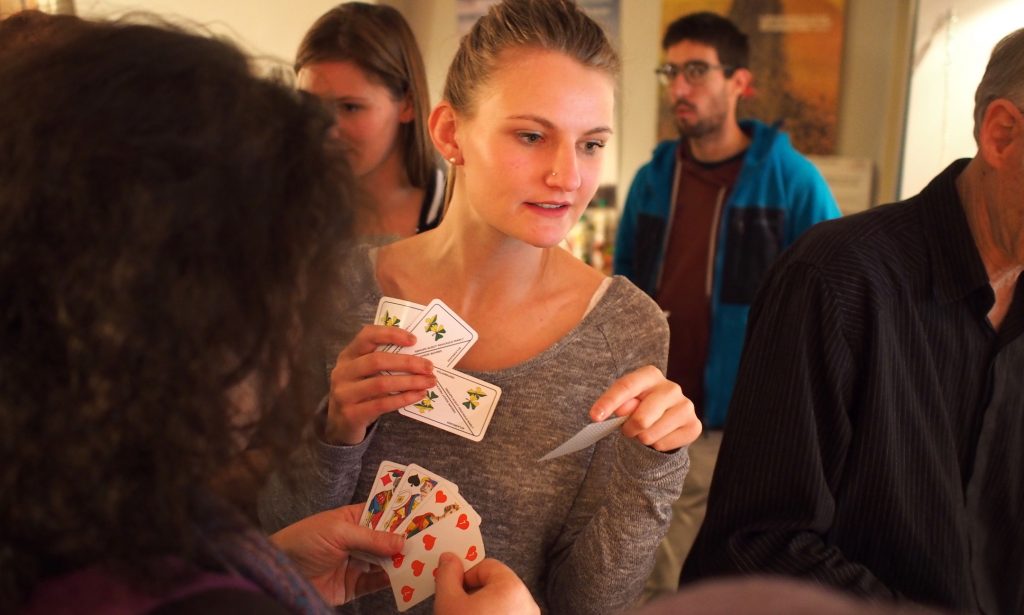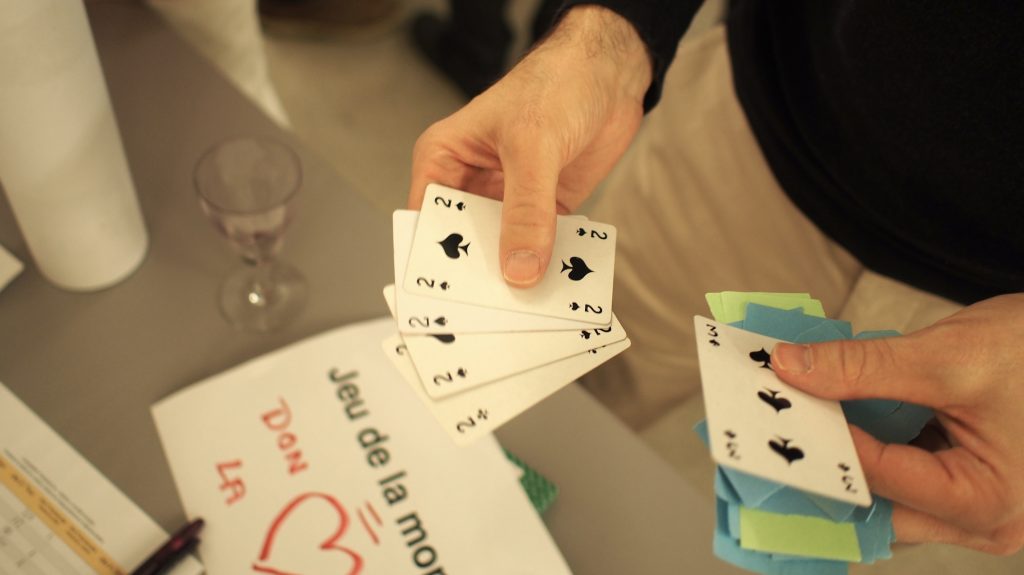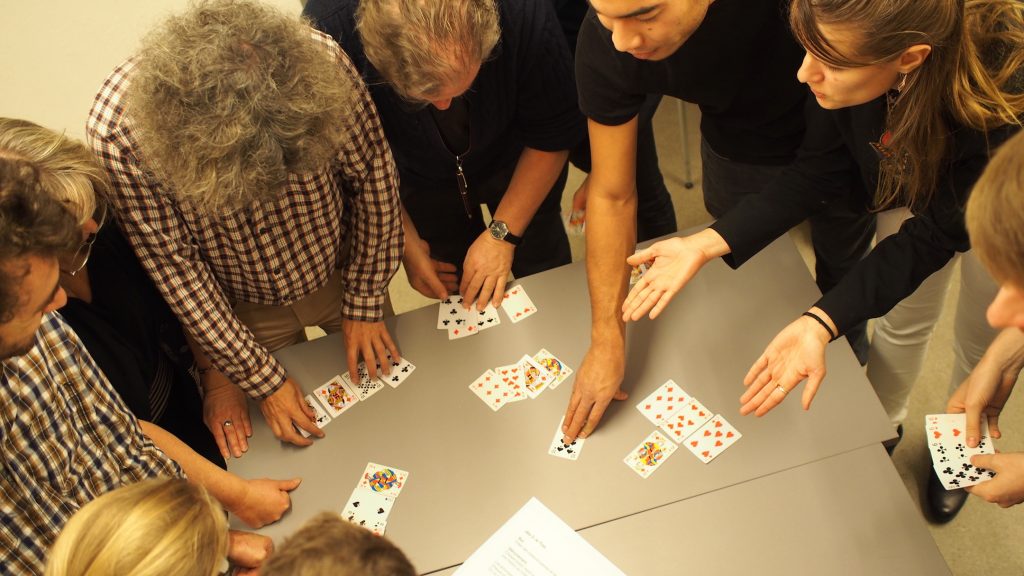[Draft translation… you can help us…]
Our goal is for the game to spread widely. As we are limited, we cannot organize and animate all the games everywhere!
So we are counting on you to also organize and animate the Money Game by your own means.
To help you, here is a starter kit to organize the game of money:
Essential documents:
Here is a sheet with the rules of the game of money. [french]
This is a manual for the leader of the currency game. (pdf) [french] → With the rules, but also practical advice to follow them, as well as some theory to answer questions and explain if necessary what the game is supposed to show.
Here is an accounting sheet [french] for the game leaders.
Here is my cheat sheet that I use to make sure I don’t forget anything while I’m leading the game:
Checklist of material for the Money Game
Minimum for the game
- Playing cards (to have 1 square per player + 4 draw squares: for 20 players → 80 + 16 = 96 cards. → 3 sets of 36 cards or 2 sets of 52 cards. When the number of players is small, favour 36-card games, it gives more possibilities)
- 1 pencil or pencil per player
- an accounting grid per player for the 4th game.
- → https://martouf.ch/utile/fichiers/jeu-de-la-monnaie-regles-du-jeu.pdf
- The rules of the game (in a compact version on the same sheet as the accounting grid. Long version in the game leader manual)
- Banknotes for the 3rd set (cut out of an A4 sheet. the easiest way is to fold the sheet into 16, i. e. 4 in width and 4 in length.) To manage the stress of having to pay houses with 5’s. The game leader can prepare piles of 5 tickets during the slower barter game. (or also have 10-dollar bills for the rich)
- a timer for game times. (a smartphone is enough)
- an accounting sheet for the game leaders.
Some tips to improve game management
- Fill in the form with the names of the participants by alphabetical order, it is faster during the game to find the right line!
- To have people in the right order, before the game everyone is asked to place themselves in alphabetical order of first names. Well, it’s quick and fun.
- At the same time, people are asked to write their first name on an adhesive tape that they place on their clothes. Thus the notary immediately sees the name of the person when he has to do the accounting.
- If we have to move quickly and we don’t have the opportunity to take the time to take people’s first names, we can assign numbers to people by writing them on labels stuck on their clothes.
- It is interesting to take this opportunity to present the SNB brochure, in which it says “everything starts with bartering”. As well as David Graeber’s book: Debt the first 5000 Years.
- For the shuffling of the cards, we tested several solutions (manual sorting, plastic bag on the back of a chair, tray on a table, separation, etc…). The easiest and most effective way is to place a table in front of the offices of notaries/bankers with 4 piles of cards. The proximity of notaries/bankers is important, as is the fact that in order to avoid traffic jams, it is necessary to have the possibility to put as many people as possible around this table. (so at least 3 free sides) It is also important that the 4 piles are accessible at arm’s length when you are on one side of the table.
- (not yet experienced, but for a large number of players, having several “sorting machines must be possible”)
- The 4 piles are used as a card sorting machine. When a player brings a house, he has a square in his hand. We have to separate the square, so he will place his 4 cards in 4 different piles. Then pick the new cards from a single pile. So we have a sorting that is well done and avoids having badly sorted squares. This while avoiding to monopolize a person who does the sorting manually.
For the atmosphere
- Aperitif available during the games. (To snack and drink) (Don’t forget the dishes for the aperitif) → Some ideas
- Enough to eat a friendly meal after the game, so that people can exchange their experiences of the game. (single or Canadian meal)
- A room, or at least a table if the game is played outdoors.
For logistics
- DIY matos, (scissors, adhesive, blank paper, post-it, marker, string, eraser, pencil sharpener, etc…)
- “Money game” sign, always useful for signposting if people need to find a room.
- Moneybox or hat to collect the “free prize” of the evening. Just to cover the organization’s expenses. We also experimented with the Conscious Participation variant. (for the game + the meal) It is a combination of what I CAN pay (I am aware of my means), what I WANT to pay (by what I want to support and thank for the wonderful contribution) and what I MUST pay (often the costs already incurred for logistics and food). It is done without justification. I experienced this for the first time during an internship at the Université du nous, which is financed in this way.
→ With the game of money you are questioned about your relationship to money to the end!
To capture and viralize the event
- Camera
- Sound recorder, microphone (for better sound in videos)
- Tripods
- List to save the contact details of participants who want to share their contact address.
Video of the progress of a money game
!!! Watch out of spoiler !!!
It’s handy to see what emerges from a game, but if you want to experience the game fully without any preconceptions, don’t watch this video!
In this video, there are the names of the games. But when you play it, you try to guess the names of the economic systems experienced in the first 2 games.
If you are organizing a public game, let us know that we are putting the information on our agenda!
